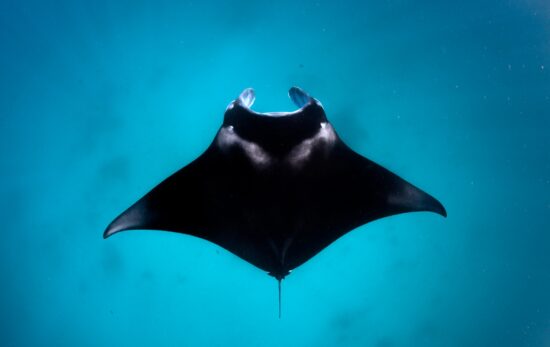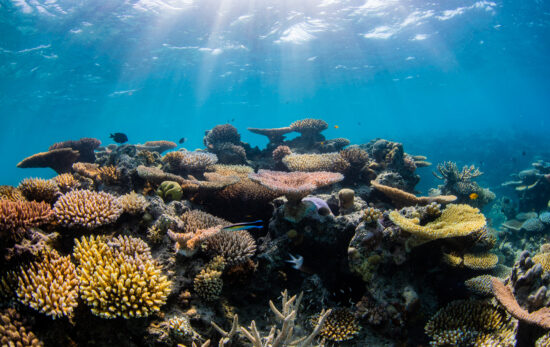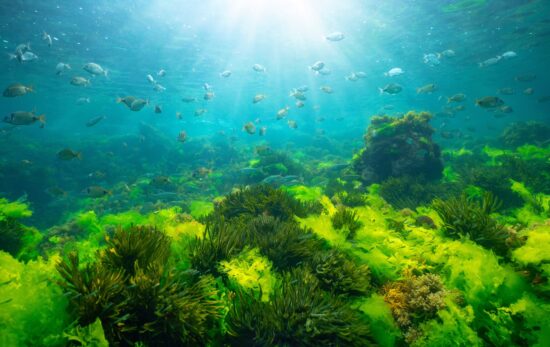What color do you see when you think of the ocean? How about when you imagine diving in the ocean? You answered, blue, right? The ocean is blue; however, do you know why? Below, we’ll explore the cool science behind why the ocean is blue, and why it sometimes is not.
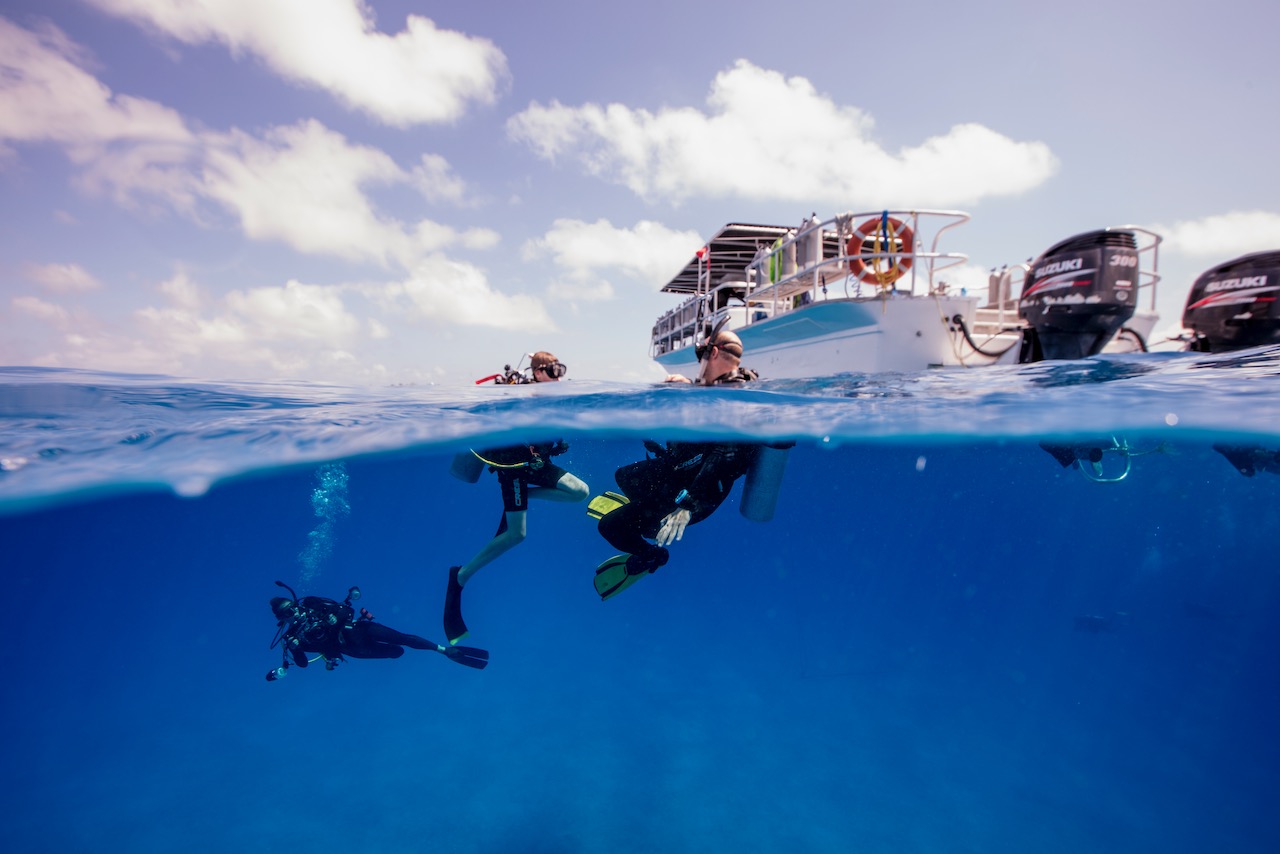
Why is the Ocean Blue? Water & Light
There are a few facts about light to review to better understand why the ocean is blue.
First, sunlight and the light from lightbulbs appears white, but it actually has all of the colors of the rainbow. You can see those colors when light travels through a prism. Pink Floyd’s 1973 album cover for their album, Dark Side of the Moon, famously demonstrates that phenomenon!
Second, light travels in squiggly waves, so the term, wavelength, is used to describe the distance between wave peaks.
Lastly, red light has a long wavelength and blue light has a short wavelength.
Why is the ocean blue? Simply put, the ocean is blue, because water absorbs colors with long wavelengths and scatters colors with short wavelengths. In other words, it absorbs red light and scatters blue light. When sunlight hits the surface, the red light doesn’t travel that far into the ocean, because water molecules absorb the light. But the blue light can travel deeper into the ocean, and it is scattered. That is why the ocean is blue!
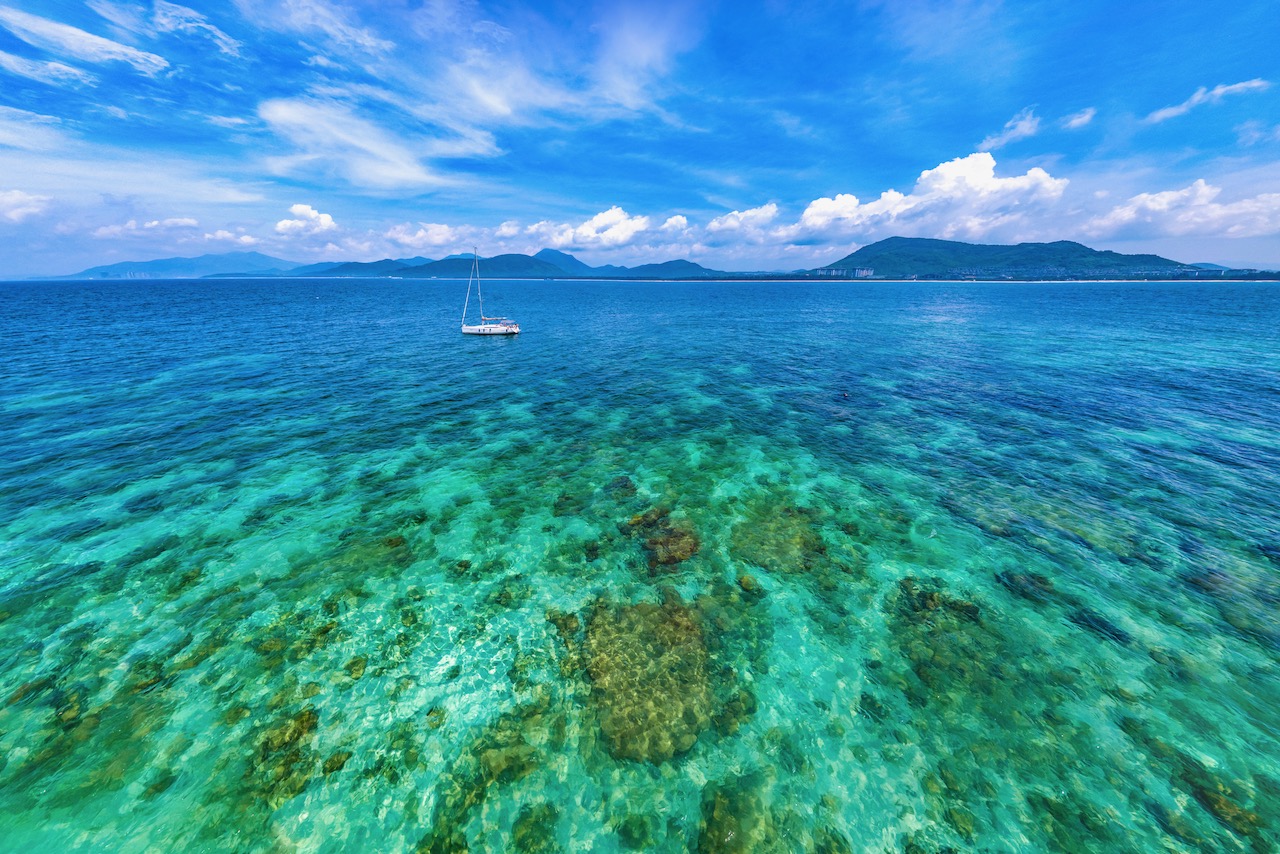
Why is the Ocean Sometimes Not Blue?
However, the ocean isn’t always blue. And it isn’t even the same shade of blue all over the world! Other factors influence the color of the ocean, such as depth and the presence of particles in the ocean.
Depth
Depth plays a huge role in light and colors in the ocean. At the surface of the ocean, the water reflects the colors of the sky. This is why the surface can look gray during stormy days and reddish-orange during sunrises and sunsets. The ocean in shallow areas, such as in the Caribbean, usually appears a beautiful turquoise blue. This is because the light hits the seafloor and bounces back up; in especially shallow areas, some of the green light is not absorbed, giving the ocean a blue-green color. As you go deeper into the ocean, there is much less light and color. As a matter of fact, barely any light is present deeper than 656 feet (200 meters), and no light penetrates deeper than 3,280 feet (1000 meters).
Particles
The ocean sometimes has different colors, like green or brown, at the surface, because other stuff is in the water reflecting light. For example, if there are particles floating in the water, like sand and sediment, these can increase scattering of the longer wavelength light, making the color of the ocean brown. Additionally, phytoplankton at the surface can absorb lots of red and blue light, yet reflects green light. So lots of phytoplankton in the ocean can make it look green, or give it green patches of color.
In fact, recent research found that climate change is changing the color of the ocean. Climate change is impacting ocean ecosystems, which affects the amount of phytoplankton present. This, in turn, is changing the color of the ocean. It’s important to study this development, because phytoplankton are major parts of ocean ecosystems. Changes could greatly impact food webs and the health of the ocean and marine organisms.
Are you ready to explore the beautiful blue ocean? Become a scuba diver and seek adventure in the depths. Click the button below to start your PADI Open Water Diver course. And, be sure to support an environmentally responsible dive shop when you’re on your next dive to help protect the ocean!
